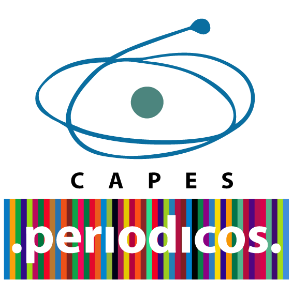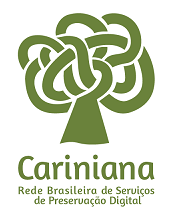Findability and videotivism: an analysis of the folksonomy attribute on youtube
DOI:
https://doi.org/10.5433/2317-4390.2017v6n2p60Keywords:
Information Findability, Folksonomy, VideotapingAbstract
Introduction: Digital technologies associated with mobility and the social web have transformed social relations into several spheres. Environments have become more and more cooperative and the mass of information deposited and shared daily grows according to the number of users - which has modified the relation that we have with the form of sharing the information in the web, as well as the form that we produce, or we carry out any type of social manifestation.
Objective: According to this premise, this article presents a study that sought to analyze the folksonomy - attribute of the Information Findability of Vechiato and Vidotti (2014), which analyzes the social labeling - starting from the users.
Methodology: The analysis was performed in the YouTube environment, collecting the information about the protests of July 17, 2013 and identifying the content of videoativism to understand how the attribute contributes to the application of Information Findability.
Results: On YouTube, approximately 145,000 search results for "June 17, 2013" are presented, and most do not belong to the traditional media - videotaped proposals are proposed. Of these, after analysis according to the methodology of observation, the number has been reduced to 8 pages of relevant content.
Conclusion: It was possible to use folksonomy at the time of publication of the video. With the search "June 17, 2013", and the result was 145 thousand videos. After using the information, this number changed to 159 videos that have real connection with the proposed theme - which classifies the folksonomy attribute as quite relevant for the Findability in the studied environment.
Downloads
References
BARDAJÍ, L. L. Rodea el Congreso: la confrontación simbólica através del audiovisual. In: BUSTOS, Gabriela et al. Videoactivismo - acción política, cámara en mano. Tenerife: Cuadernos Latina, 2014.
BLATTMANN, U.; SILVA, Fabiano Couto Corrêa da. A Colaboração e a interação na Web 2.0. Revista ACB: Biblioteconomia em Santa Catarina, Florianópolis, v. 12, n. 2, p. 191-215, jul./dez., 2007.
CASTELLS, M. Redes de Indignação e Esperança: Movimentos Sociais na Era da Internet. Rio de Janeiro: Editora Zahar, 2013.
CATARINO, M. E.; BAPTISTA, A. A. Folksonomia: um novo conceito para a organização dos recursos digitais na web. DataGramaZero, v. 8, n. 3, 2007. Disponível em: http://basessibi.c3sl.ufpr.br/brapci/v/a/4483. Acesso em: 04 set. 2017.
DURIGAN, G. Vídeo-ativismo em rede: um estudo sobre os protestos brasileiros de 2013 registrados no documentário 20 centavos. 2016. 102f. Dissertação (Mestrado em Mídia e Tecnologia) - Universidade Estadual Paulista “Júlio de Mesquita Filho”, Faculdade de Arquitetura, Artes e Comunicação, Bauru, 2016.
FAROOQ et al. Evaluating tagging behavior in social bookmarking systems: metrics and design heuristics. In: CONFERENCE ON SUPPORTING GROUP WORK. p. 351-360, 2007. Proceedings…, 2007.
GARCIA, P. F. Videoactivismo de convocatoria: el linguaje publicitario en las Mareas Ciudadanas. In: BUSTOS, Gabriela et al. Videoactivismo - acción política, cámara en mano. Tenerife: Cuadernos Latina, 2014.
LOHMANN, S.; DÍAZ, P. Representing and visualizing folksonomies as graphs - A reference model. 2012 International Working Conference on Advanced Visual Interfaces, AVI 2012, Capri Island. p. 729-732.
MAZETTI, H. Resistências criativas: os coletivos artísticos e ativistas no Brasil. Revista Lugar Comum, n. 25-26, 2008.
MIKA, P. Social networks and the semantic web. New York: Springer, 2007. 234 p.
MORVILLE, P. Libraries at the crossroads of ubiquitous computing and the internet. Online, v. 29, n. 6, nov./dez. 2005.
REIS, L. F. M. dos. Sistema de Recomendação Baseado em Conhecimento. 110 f. 2012. Dissertação (Mestrado em Engenharia Informática) − Departamento de Engenharia Informática Faculdade de Ciências e Tecnologia, Universidade de Coimbra, Coimbra, 2012.
RENÓ, D. P. Folkcomunicación ciudadana a partir de la web 2.0 y de la movilidad. Revista internacional de Comunicación y Desarrollo, v. 1, p. 51-59, 2015.
RIBEIRO, O. B.; VIDOTTI, S. A. B. G. Otimização do acesso à informação científica: discussão sobre a aplicação de elementos da arquitetura da informação em repositórios digitais. Biblos, v. 23, n. 2, p. 105-116, 2009.
ROBREDO, J. Sobre arquitetura da informação. Revista Ibero-americana de Ciência da Informação, v. 1, n. 2, p. 115-137, 2008.
SHEN, K.; WU, L. Folksonomy as a complex network. 2005. TSUI, E.; et al. A concept–relationship acquisition and inference approach for hierarchical taxonomy construction from tags. Information Processing and Management, v. 46, n.1, p. 44-57, 2010.
VECHIATO, F. L.; OLIVEIRA, H. P. C. de; VIDOTTI, S. A. B. G. Arquitetura da informação pervasiva e encontrabilidade da informação: instrumento para a avaliação de ambientes informacionais híbridos. In: ENCONTRO NACIONAL DE PESQUISA EM CIÊNCIA DA INFORMAÇÃO (ENANCIB), 17., 2016, Salvador. Anais...Salvador: ENANCIB, 2016.
VECHIATO, F.; VIDOTTI, S. A. B. G. Encontrabilidade da Informação: atributos e recomendações para ambientes informacionais digitais. In: ENCONTRO NACIONAL DE PESQUISA EM CIÊNCIA DA INFORMAÇÃO (ENANCIB), 15., 2014. Belo Horizonte. Anais... Belo Horizonte, ENANCIB, 2014b.
VECHIATO, F. L.; VIDOTTI, S. A. B. G. Encontrabilidade da informação. São Paulo: Cultura Acadêmica, 2014a. (Coleção PROPG Digital- UNESP). Disponível em: http://hdl.handle.net/11449/126218. Acesso em: 04 set. 2017.
WURMAN, R. S. Ansiedade de Informação: como transformar informação em compreensão. São Paulo: Cultura, 2003.
WURMAN, R. S. Ansiedade de informação 2: um guia para quem comunica e dá instruções. São Paulo: Editora de Cultura, 2005.
Downloads
Published
How to Cite
Issue
Section
License
A revista se reserva o direito de efetuar, nos originais, alterações de ordem normativa, ortográfica e gramatical, com vistas a manter o padrão culto da língua e a credibilidade do veículo. Respeitará, no entanto, o estilo de escrever dos autores. Alterações, correções ou sugestões de ordem conceitual serão encaminhadas aos autores, quando necessário.
O conteúdo dos textos e a citação e uso de imagens submetidas são de inteira responsabilidade dos autores.
Os trabalhos publicados passam a ser propriedade da revista Informação& Profissões, ficando sua reimpressão total ou parcial sujeita a autorização expressa da revista. Em todas as citações posteriores, deverá ser consignada a fonte original de publicação, no caso a Informação&Profissões.












